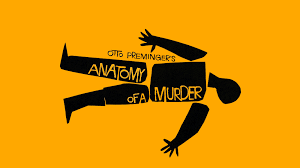Introduction
The mid century modern aesthetic encompasses a wide realm of design including, but not limited to, graphic design, interior design, and product design. It is characterized by its “clean lines, a fusion of organic and manmade materials, and retro style” (MasterClass). This design aesthetic became popular in the mid-twentieth century. Other elements of mid century modern style is muted colors as well as vibrant colors. It is considered postmodernist.

History
The German Bauhaus art school was a heavy influence for the rise in popularity of this aesthetic. The Bauhaus was primarily focused on the clean lines similar to mid century modern art as well as function. The spike of retro furniture also become popular in the 1950s with more colors and designs being possible due to the rise in mass production. After World War II, there were a lot more materials available to be used in the home. People used these new materials such as steel and insulated glass to create a natural, functional, and retro-futuristic style.


Interior Design
The characteristics that define mid century modern architecture and interior design are defined by functionality, clean lines, wood and other natural materials, and connections to nature, such as plants and floor-to-ceiling windows. These designs are commonly found in places like Palm Springs, California and New York City.
Graphic Design
When it comes to graphic design, the mid century modern style has similar characteristics to interior design keeping with the themes of the clean lines and bold colors. In mid century modern graphic design, geometric shapes and simplicity rose in popularity during World War II as European designers came to America and mass printing became more available. The typography used is also bold and playful to go along with the rest of the style.
Mid Century Modern Today
The mid century modern style was seen on posters during the war, musician’s record covers, movie posters, art, and more. It is described as a timeless design due to its simplistic and visually appealing elements. When it was first created, it was a change from the prior design elements of colonial aesthetics bringing something new into American homes. It is also still prevalent in pop culture in places such as tv shows, movies, and art. Some artists that have used this style are Jackson Pollock who was known for his chaotic paintings, Frank Lloyd Wright, an architect who designed Falling Water, and Joseph Caroff, know for his unique and sometimes minimalist movie poster designs.



References
https://www.masterclass.com/articles/mid-century-modern-design-guide
https://www.architecturaldigest.com/story/midcentury-modern-architecture-everything-you-should-know
https://www.creativebloq.com/features/mid-century-modern-graphic-design-a-designers-guide
https://www.washingtonpost.com/home/2023/06/13/why-midcentury-modern-furniture-popular/

4 Comments. Leave new
I enjoyed reading this post and found it informative! I would be interested in seeing more examples of the art that influenced this aesthetic.
Hi Abigail, thank you for your response, I would also love to find some more examples of how this aesthetic takes its form in different styles of art.
Hey Sophia, really great post. I liked that you included the graphic design aspect of the aesthetic and not just the architectural side. I don’t fully understand how the Jackson Pollock painting fits into this aesthetic.
Hi Fin, thank you for your response. I was also curious about the Jackson Pollock painting and its relation to this aesthetic. I read about it as an example in an article, maybe due to its bright colors?